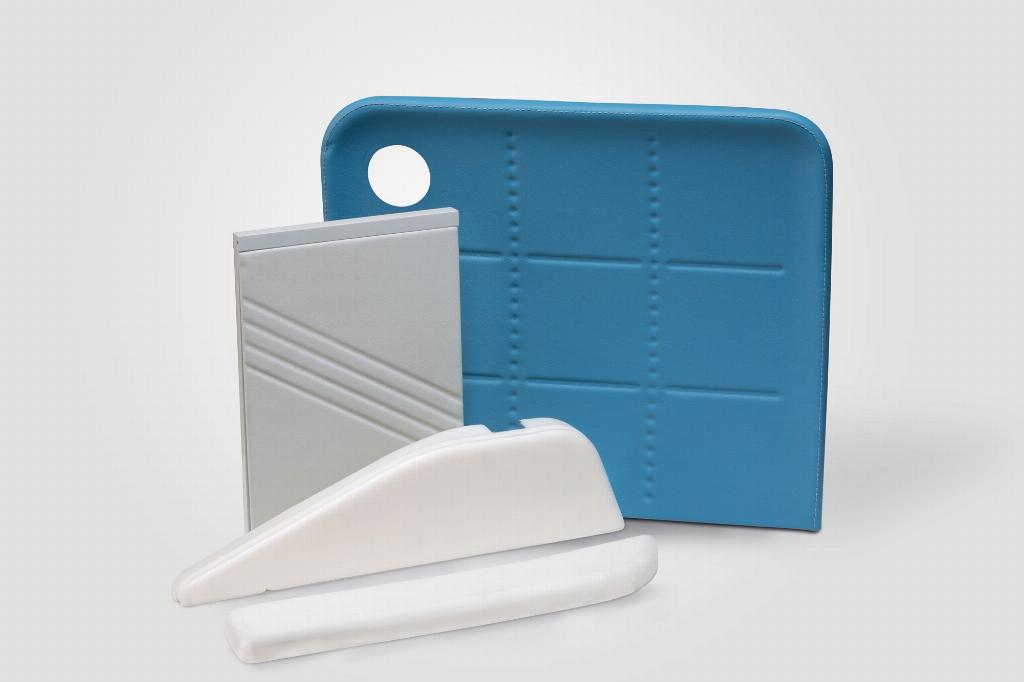Get in the zone with foam

James Bridges, director of HPP Business Units, Zotefoams looks at the role cellular foams materials are increasingly playing in aircraft interiors to significantly reduce weight compared to traditional materials, and create huge fuel savings overall.
With aviation being one of the fastest-growing sources of greenhouse gas emissions, and global demand for air travel and transport significantly increasing year-on-year, aircraft manufacturers are working relentlessly to develop revolutionary technology that meets the ambitious targets of dramatically reducing carbon emissions.
While strategies, such as new engine designs, alternative fuels and air traffic management are at the forefront, the potential of new materials should not be overlooked.
In interiors, for example, there are new, innovative technologies evolving for aircraft, replacing traditional materials and components that offer greater functional benefits to meet complex technical, regulatory and aesthetic requirements, while reducing carbon emissions through reduced fuel consumption.
These materials, which offer light weight and process versatility, have already replaced heavier, composite components such as ducting, window seals, carpet underlay and soft touch trims. The latest advances extend the possibilities even further, replacing solid thermoplastics and silicon components currently used extensively in interiors.
Aviation material standards are central when evaluating components used for aircrafts as they encompass requirements including thermal, fire, smoke & toxicity (FST) performance, and, now high priority, weight-saving credentials.
Foam hits home
Zotefoams, a British manufacturer of closed-cell polyethylene (PE), polyvinylidene fluoride (PVDF) and nylon foams for demanding industrial applications, has recognised the unique properties of its advanced foams that can provide a sophisticated, lightweight, fire-resistant solution for aviation, while complying with and exceeding demanding industry standards.
Originally founded as a manufacturer of expanded rubber products in the 1920s, the forerunners of Zotefoams supplied aviation-grade foamed rubber before switching to a polyolefin-based portfolio during the 1970s, believing the future lay in the more specialised and sophisticated properties afforded by plastics. During the 1990s, Zotefoams investigated other materials that could be used for foaming; the result was a range of high-performance foams produced from engineering polymers.

Key to the performance of these materials and ultimately the success of the company is a manufacturing process which uses only pure nitrogen to expand foams. The air we breathe is 78% nitrogen, so the process is inherently environmentally friendly; far more so than the widespread method of expanding foam chemically. Nitrogen is also chemically inert, which is an important factor where flame retardance is a critical requirement.
This is a three-stage process, with the first stage seeing base resin and additive ingredients extruded to produce solid polymeric sheets. Depending on the material, these are crosslinked either during the extrusion process or offline subsequently; crosslinking is essential to the strength and performance of the finished product.
In the second stage foams are loaded into a high-pressure autoclave and heated above their softening temperature while being subjected to a high-pressure dose of pure nitrogen. Finally, the nitrogen-charged slabs are loaded in a low-pressure autoclave, again heated above their softening temperature to allow controlled expansion of the nitrogen and thereby uniform physical foaming.
One of the most successful products to come from Zotefoams’ manufacturing process is a PVDF foam known as Zotek F, an inherently flame-retardant material combining a luxury feel with outstanding FST ratings while delivering weight savings that makes air travel more sustainable. It has become an increasingly compelling choice for aircraft interiors, offering significant weight reductions of up to 50% compared to materials such as silicone, and making huge fuel savings overall.
Recently added to the range is an extra-rigid closed cell crosslinked foam available in densities of 120 and 150kg/m³ known as Zotek F OSU XR, the introduction of XR significantly extends the scope of applications in aircraft interiors. With high-performance PVDF foam already being used extensively by leading aircraft manufacturers for window seals, soft-touch trim, close-outs, insulation, carpet underlay and environmental control systems (ECS) due to its light weight, ease of processing and frequent suitability to replace composite materials, this new, extra-rigid PVDF foam can extend the weight saving benefits to locations, such as interior of seat pods, stowage lockers, rigid armrests and tray tables, reducing weight by as much as 70% on a like-for-like basis.
Crucially, grades of PVDF foam can be laminated together to create a single material that is rigid on one side and soft/flexible on the other and can be formed into curves and complex shapes, opening up opportunities for design teams looking to bring individuality and extra comfort to cabin interiors. With the carbon footprint of air travel firmly in the spotlight, the potential weight savings achievable by replacing solid thermoplastic and silicon components are particularly attractive.
Also in demand for their weight-saving properties is a group of polyethylene foams known as Azote. With densities starting as low as 15kg/m³, the closed cell, crosslinked range holds the lightest OEM-approved FR grade aviation foam, MP15kg/m³. The range includes conductive and static dissipative grades compatible with a variety of applications, including ducting, seals, insulation, buoyancy aids and seat padding and support; Azote LD24FR is the market-leading foam for aircraft seating.
Both PVDF and polyethylene foams are manufactured via a process that produces foams with inherently low odour levels and remarkably consistent closed cell structure, characteristics that make the foam exceptionally easy to fabricate and extremely desirable for aircraft manufacturers.
The future of aircraft interior materials is, without doubt, shifting to more advanced, hi-tech solutions that offer applications and functionality beyond the obvious. In recent years manufacturers have come to the realisation that, although they are less demanding structurally, aircraft interiors also have a huge impact on the environment and so are compelled to seize the challenge of developing innovative technologies that offer more sustainable and lighter weight properties, without sacrificing on performance or cost.











